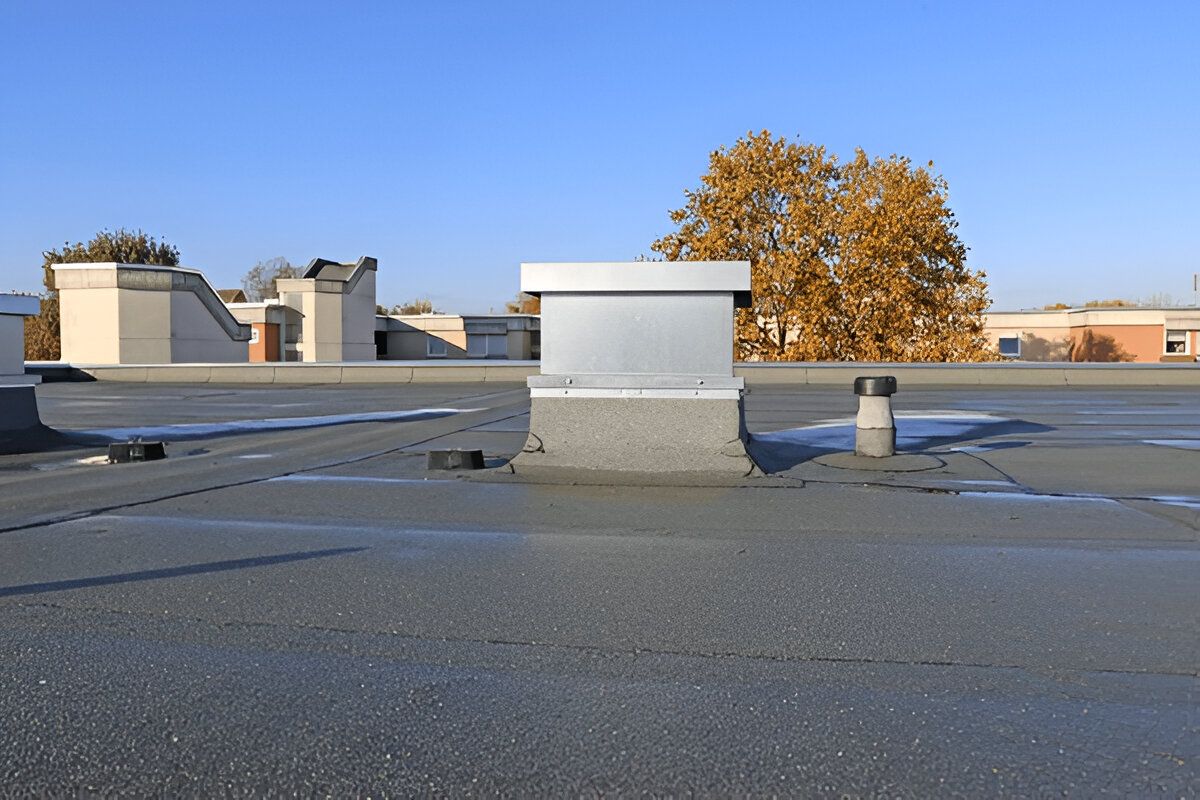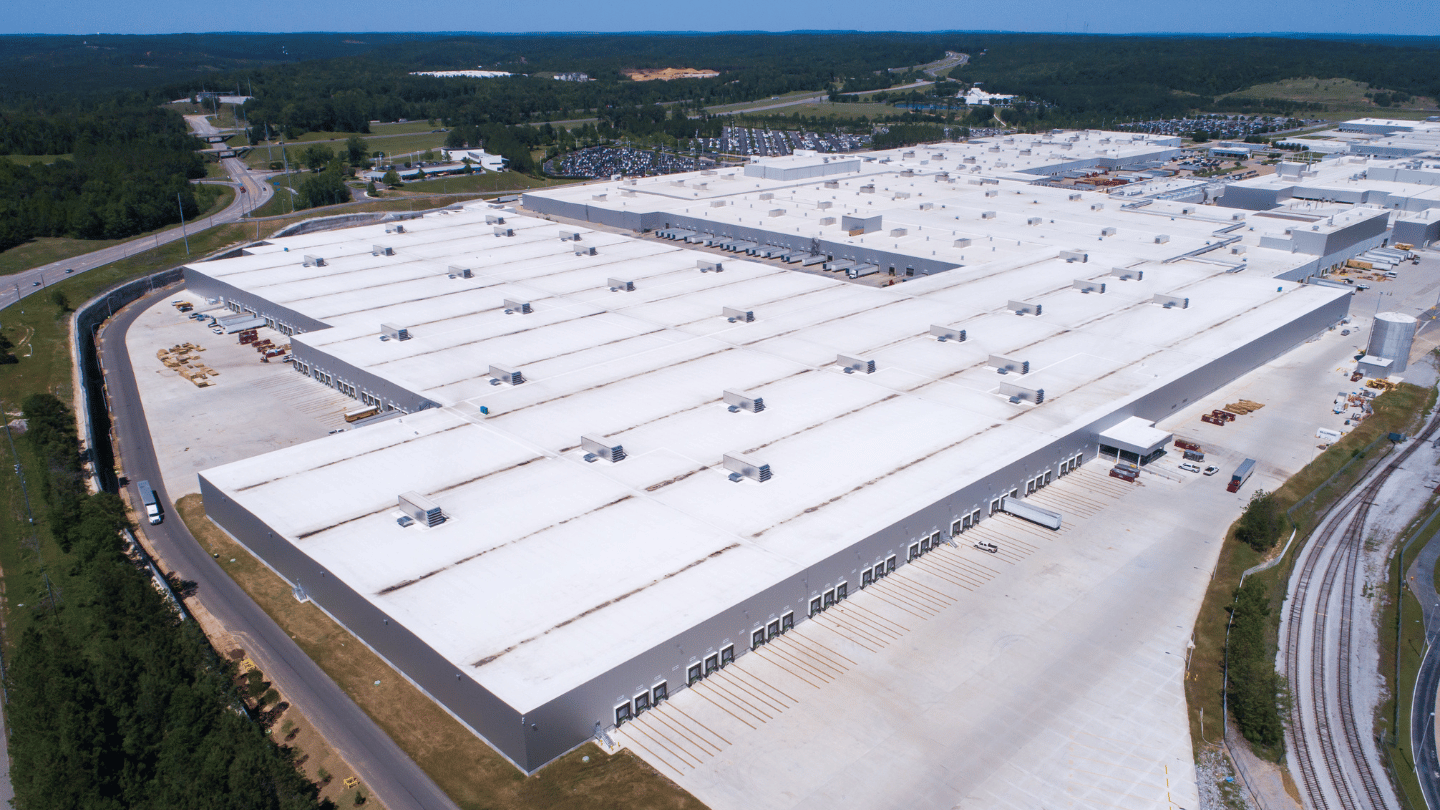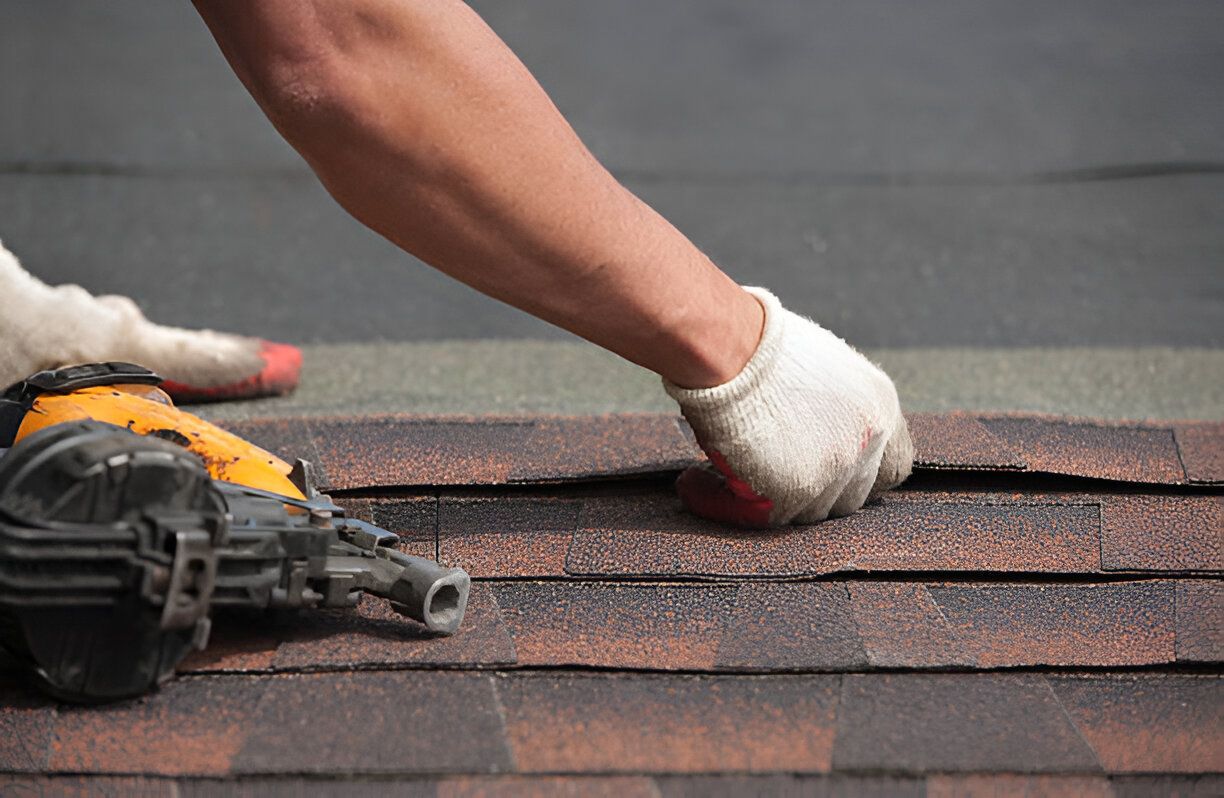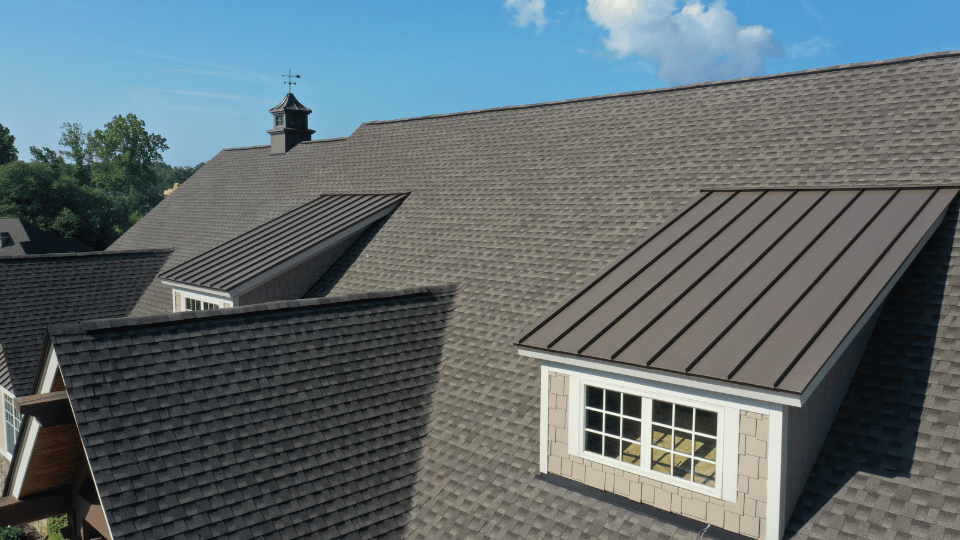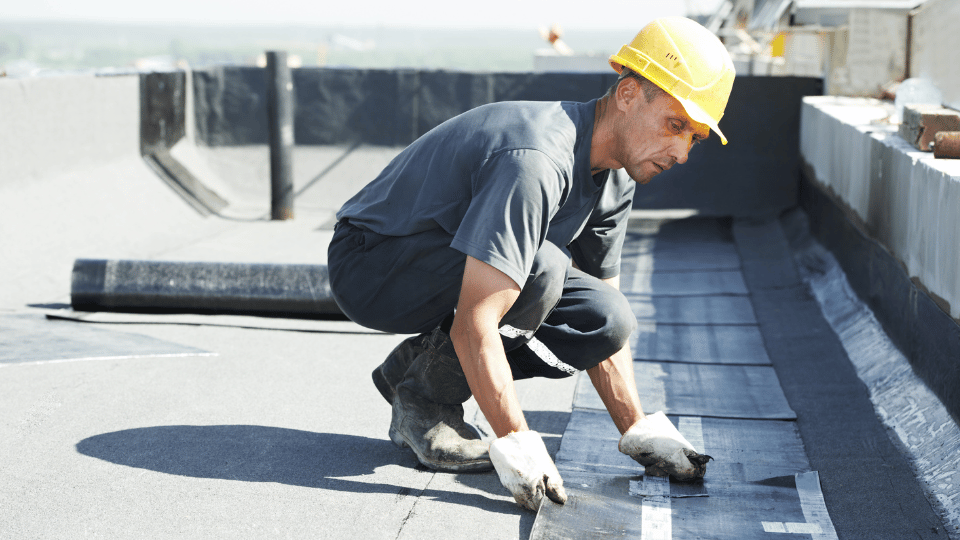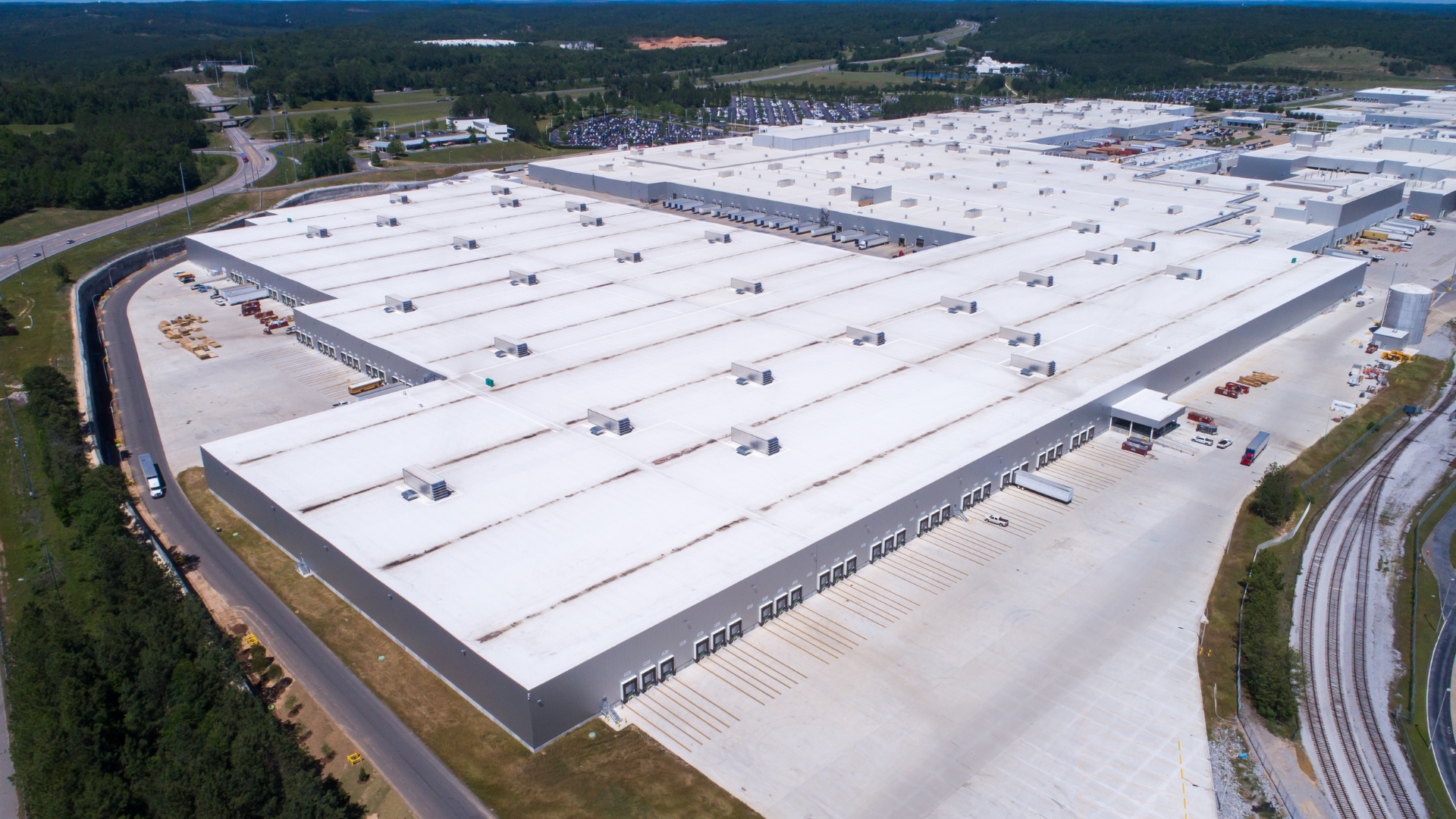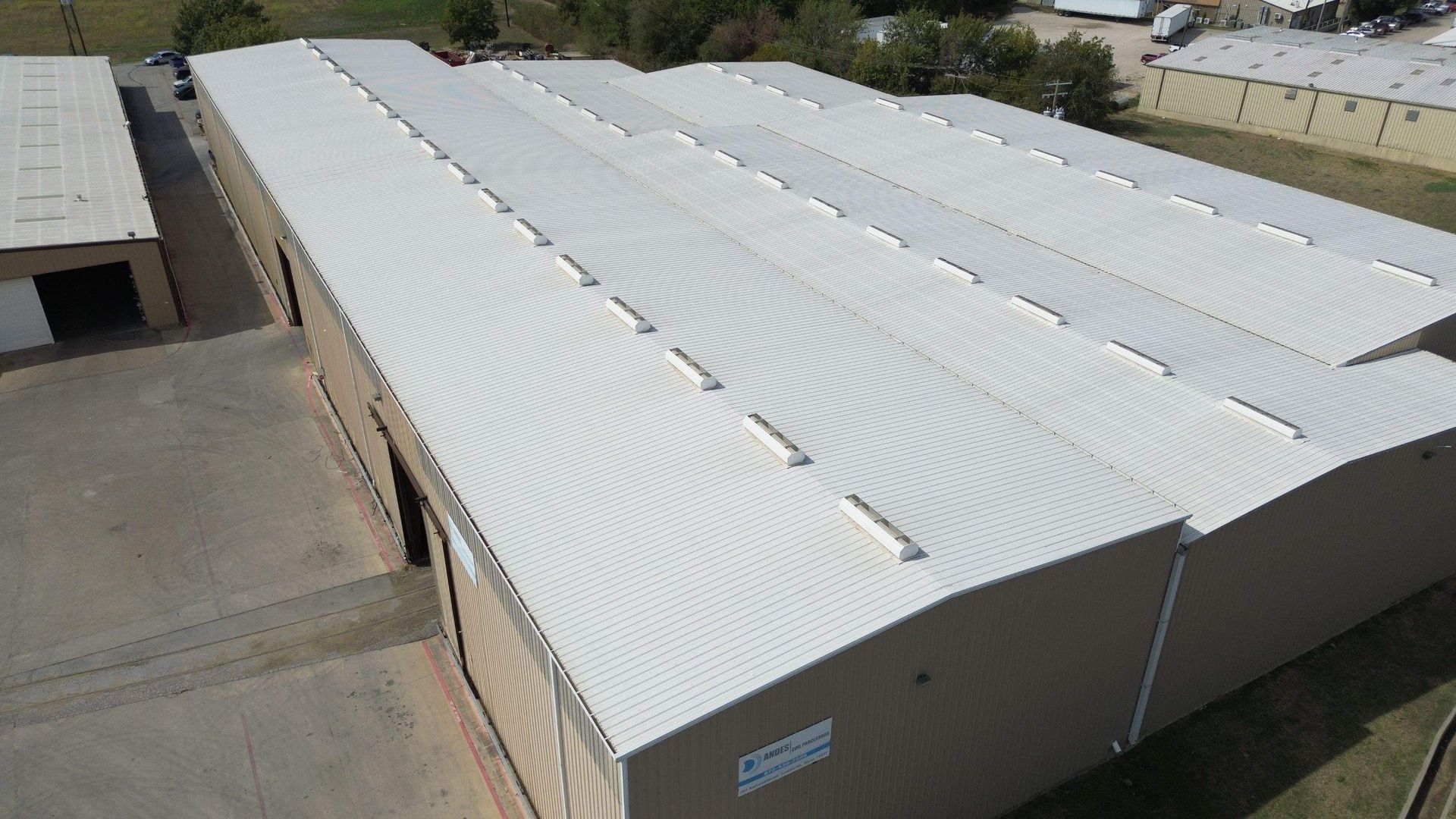CALL US NOW!
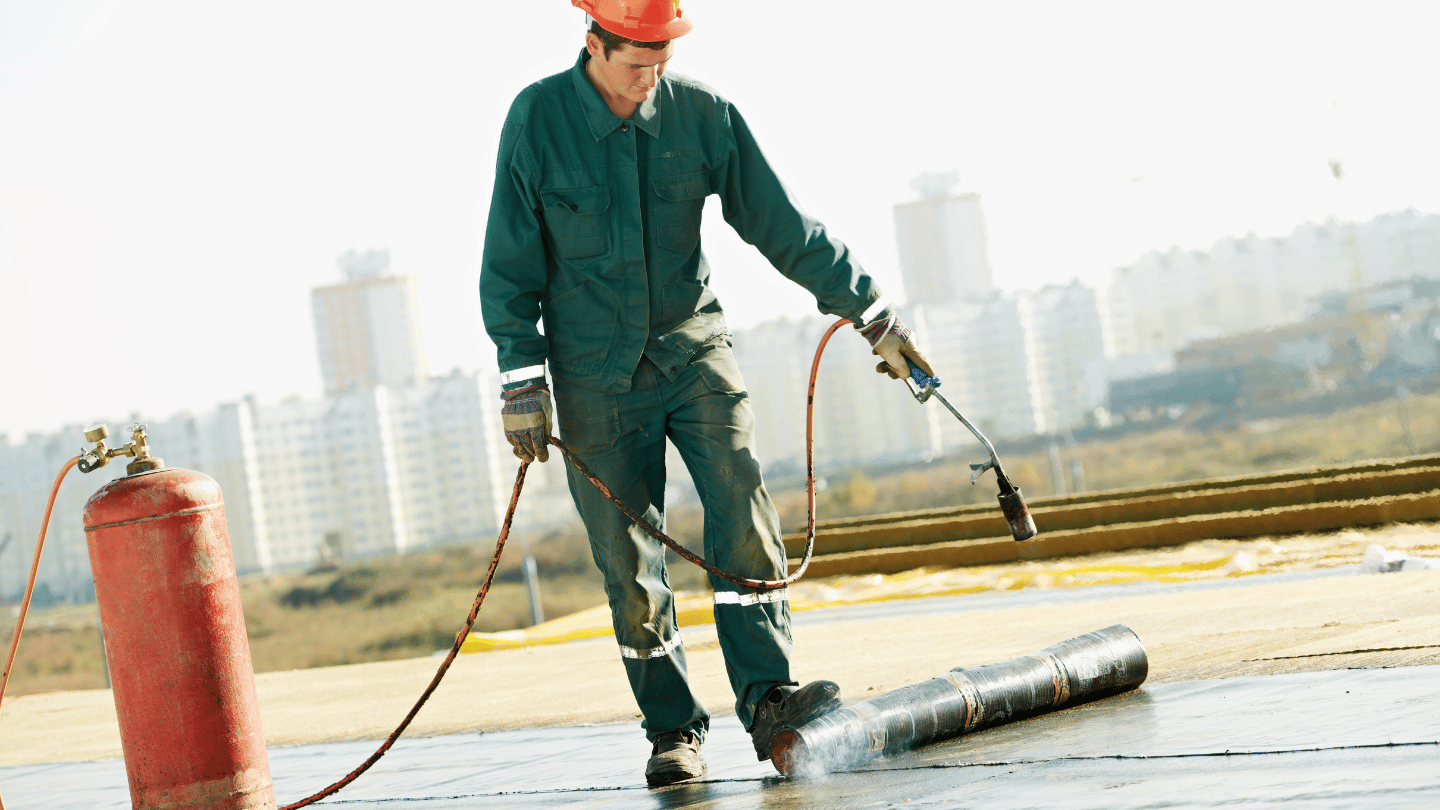
The Ultimate Guide to Flat Roof Repair: Costs, Methods, and Tips
Facing problems with your flat roof in Flower Mound TX? This comprehensive guide breaks down how to repair a flat roof, including flat roof repair costs, different repair methods, common issues, and essential maintenance tips to help you fix your roof efficiently.
Key Takeaways
- Flat roof repair costs vary significantly based on size, materials, and damage extent, ranging from $400 for simple leaks to $4,000 for hail damage.
- Common flat roof materials like GRP, fiberglass, and modified bitumen have unique repair costs, with averages between $3 to $7 per square foot depending on the type of existing roof material.
- Regular maintenance and timely inspections are crucial for preventing issues like leaks and blistering, extending the lifespan of flat roofs and reducing long-term repair costs.
Understanding Flat Roof Repairs
What is a Flat Roof?
A flat roof is a type of roofing structure that is almost level, with just a slight slope to facilitate water runoff. This design is commonly found on commercial buildings and contemporary-style homes. Flat roofs are constructed using various materials, including asphalt, rubber, PVC, and synthetic compounds, each offering different levels of durability and waterproofing.
While flat roofs are generally less expensive to install compared to pitched roofs, they do require more frequent maintenance and repairs. This is because they are more susceptible to weather-related damage, such as hail, wind, and UV rays. However, with proper care and timely repairs, a flat roof can provide many years of reliable service. Regular inspections and maintenance are key to extending the lifespan of flat roofs and preventing costly damage.
Understanding Flat Roof Repair Costs
It is vital to comprehend the factors that influence flat roof repair costs for efficient financial planning. The cost of repairs is primarily determined by the size and complexity of the roof. Bigger roofs typically yield a smaller price per square foot, yet they can still amount to a considerable expense. Selecting different roofing materials will impact the overall cost due to their varying prices.
The total expenditure on flat roof repairs hinges on several elements such as the chosen repair method, material costs, and intensity of labor involved. Repairing leaks in a flat roof might incur expenses ranging from $400 to $1,300 based on how severe the damage is and what materials are required for fixing it. Identifying and removing damaged roofing material is crucial as it can significantly affect the repair costs. Metal flat roofs have their own pricing scale at about $5 to $15 per square foot for repairs while tearing down old roofing may add an extra charge between $1 to $5 per square foot onto your bill.
Additional standard maintenance expenditures encompass charges from roughly $750 up towards around $2,500 when addressing issues like sagging in flat roofs or shelling out anywhere between approximately 750 dollars, near 4 thousand if hail damage occurs. Being aware of these figures equips property owners with essential knowledge needed for sound budgetary preparations.
Types of Flat Roof Materials and Their Repair Costs
The repair costs for different flat roof materials vary depending on the inherent properties of each roof material and the typical problems they encounter. This variance serves as a helpful indicator when selecting an appropriate material for your flat roof and estimating future repair expenditures. Typical materials employed in constructing flat roofs are GRP (glass reinforced plastic), fiberglass, and modified bitumen, all possessing unique benefits and potential drawbacks.
Known for their pliability and simple installation process, GRP flat roofs can be susceptible to damage from the elements. Fiberglass roofs boast robustness yet may experience issues with cracking or leaks over time. Offering both versatility and affordability, modified bitumen roofing is widely utilized across residential and commercial settings alike due to these attributes.
We will delve into the specific repair costs associated with each type of material in subsequent sections below, examining them in greater detail.
GRP (Glass Reinforced Plastic)
Glass-reinforced plastic (GRP) is frequently selected for flat roofs owing to its adaptability and straightforward installation process. Nevertheless, it can suffer from damage caused by environmental conditions, resulting in fissures and separations. To preserve the durability of GRP flat roofs, consistent upkeep and sealant application are essential.
The expense of mending GRP flat roofs falls between $3 and $6 per square foot, with fluctuations based on specific circumstances and demands. A typical approach to repair involves employing fiberglass mesh membrane patches that bridge cracks or voids while maintaining the roof’s resistance to weather elements as well as its robustness.
By conducting regular checks and addressing repairs promptly, one can avert significant deterioration that might otherwise necessitate costly remediation efforts over time. Additionally, it is crucial to apply roofing cement not only to the damaged area but also to the surrounding roof material to ensure a secure and reliable bond.
Fiberglass
Fiberglass flat roofs are recognized for their robustness and ability to withstand different climatic elements. Despite this, they can be prone to the following forms of damage:
- cracks
- breaks
- dents
- water-related issues
To preserve a fiberglass roof’s condition, it is essential to carry out routine upkeep and timely repairs.
The cost of mending fiberglass flat roofs typically falls between $3 and $6 for each square foot. Common methods employed in these repairs involve utilizing specialized roof repair kits or applying patches made from a fiberglass mesh membrane specifically designed for fixing minor punctures or fissures.
Ensuring that both the roof deck and adjacent damaged and undamaged roofing materials remain in prime condition is crucial. This preventative measure helps avoid additional harm while also prolonging the life expectancy of your roofing materials.
Modified Bitumen and Bitumen Roof Sealant
Modified bitumen roofs stand out for their flexibility and resilience against severe temperature fluctuations. They are designed to be adaptable, which makes them ideal for a wide range of roofing needs in both the residential and commercial sectors. To ensure the longevity of modified bitumen roofs, it’s essential to perform consistent maintenance and timely repairs, often initiating with an application of a bitumen primer.
Repair costs for these flat roofs typically fall between $3 to $7 per square foot. Commonly employed repair techniques involve utilizing a bitumen roof sealant or waterproof roofing cement to fix any emerging cracks or leaks.
Maintaining the integrity of the roof along with its reflective coatings is crucial in safeguarding it from damage caused by environmental elements, ultimately prolonging its serviceable life.
Common Flat Roof Problems and Solutions
Flat roofs face numerous challenges that can impact their durability and longevity. Issues such as leaks, blistering, and the accumulation of standing water are prevalent concerns that need targeted remedies for effective resolution. To prevent these problems from inflicting substantial harm, it is crucial to engage in ongoing upkeep and carry out immediate repairs when necessary.
Leaks on flat roofs often result from inadequate maintenance or drainage issues. Meanwhile, blistering occurs when air or moisture becomes trapped between layers of roofing membrane. If this problem goes unaddressed, it may lead to more severe damage including cracks and tears.
Water pooling usually results from poor drainage systems or complications like clogged or malfunctioning drains. Taking swift action against these common setbacks is essential to protect flat roofs against deterioration while prolonging their functional life expectancy.
Leaks
Flat roofs frequently encounter leak issues, which can originate from a variety of defects including problems at the seams or damage like rips, tears, holes, or cracks. Pinpointing the location of leaks may be difficult since water has a tendency to travel from its entry point before it becomes noticeable. Prompt attention and repair are crucial in averting additional harm to both the roof’s structure and the interior of the building.
To remedy leaking issues on flat roofs, typically involves patching or sealing any compromised spots. This is done by applying materials such as roofing cement, caulk, or utilizing specialized roof repair kits designed specifically for filling small cracks or covering minor holes. It is essential to match the patch materials to the specific type of existing roof material to ensure effective and durable repairs. Conducting routine inspections and maintenance for early detection and immediate fixing of leaks is key in avoiding extensive deterioration that could lead to significant expense for repairs.
Blistering
Trapped air or moisture beneath the layers of a flat roof membrane can lead to blistering. Without timely intervention, these blisters may grow and rupture, resulting in cracks and tears within the membrane. To avoid significant damage due to blistering, it is important to perform regular checks on the roof’s condition and make repairs as soon as necessary.
The expense involved with fixing blisters on a flat roof usually ranges from $250 up to $1,000. For flat roofs plagued by such issues, resurfacing is frequently suggested because it not only addresses root problems but also reinforces overall structural robustness.
Adhering to an appropriate maintenance regimen along with consistent inspections serves as a preventive measure against blister formation on flat roofs thereby ensuring their prolonged durability.
Water Pooling
Accumulation of water on flat roofs mainly results from inadequate drainage and issues such as blocked or defective drains. This can cause the roof structure to sink and may result in leaks. Ensuring that maintenance is carried out regularly, along with a well-functioning drainage system, is critical to averting the accumulation of water and subsequent harm.
The expense associated with repairing water pooling on flat roofs usually ranges from $75 to $500. To manage this problem effectively, it’s important to maintain both the roof deck and its drainage systems properly.
By consistently inspecting your roofing system for any signs of trouble related to drainage and addressing them promptly, you can sidestep severe damage that could lead to more substantial repair costs.
Locating the Leak
How to Find a Leak in a Flat Roof
Finding a leak in a flat roof can be a challenging task, but it is crucial to identify and repair the leak promptly to prevent further damage. Here are some steps to help you locate a leak in a flat roof:
- Look for Signs of Water Damage: Begin by checking the interior of the building for water stains, discoloration, or warping on the ceiling or walls. These signs often indicate a leak in the roof above.
- Inspect the Roof: Conduct a thorough inspection of the roof surface for visible signs of damage, such as cracks, holes, or blisters. Pay special attention to seams and joints where leaks are more likely to occur.
- Use a Hose: If the leak is not immediately apparent, use a hose to simulate rainfall. Spray water on different sections of the roof and observe where the water penetrates. This can help pinpoint the source of the leak.
- Check the Roof Deck: Inspect the roof deck for any signs of damage or rot. A compromised roof deck can be a source of leaks and should be addressed promptly.
- Use a Flashlight: In low-light conditions, use a flashlight to shine on the roof surface. This can help you spot any signs of water penetration that might be missed during a regular inspection.
Once you have located the leak, it is essential to repair it promptly to prevent further damage to the roof and the building. Addressing leaks early can save you from more extensive and costly repairs down the line.
Repair Methods for Flat Roofs
Various techniques are employed when repairing a flat roof, tailored to the particular damage and condition of the roof. These methods range from patching and resealing to resurfacing, each offering varying degrees of protection and lasting durability. Selecting an appropriate repair strategy is crucial for maintaining both the long-term resilience and structural soundness of a flat roof.
For minor imperfections such as small cracks or holes, patching serves as an economical approach to fix these issues. In contrast, resealing entails covering the entire roof with a protective coating that not only prolongs its functional life but also shields it against water infiltration and ultraviolet light deterioration. Using a paint roller to apply a bitumen-based primer and reflective coating ensures an even, thin layer that enhances waterproofing and protection.
When dealing with more extensive areas of concern on a flat roof, resurfacing becomes advisable. This method significantly bolsters the overall durability while providing sustained defense against future damage.
Patching
Repairing minor imperfections such as small cracks and holes in flat roofs can be efficiently achieved through patching, an economical strategy that utilizes a roof repair kit. Such kits often come equipped with fiberglass mesh membrane patches alongside sealants to mend these slight damages before they progress into more severe problems.
The expense of carrying out this type of repair is influenced by the extent of the damage and the materials selected for use. Essential implements typically required for this task include a utility knife, along with membrane patches and caulk. By conducting routine checks and swiftly applying patches when needed to address damaged roofing material, one can uphold the structural soundness of their roof while averting more substantial harm.
Resealing
Applying a fresh seal to a flat roof serves as an excellent strategy for enhancing its longevity, safeguarding it from the damaging effects of water penetration and ultraviolet rays. This process encompasses using a paint broom to evenly spread bitumen roof sealant or comparable roofing materials over the entire surface, ensuring proper coverage and maintaining its resilience against harsh weather conditions.
The financial outlay for resealing a flat rooftop usually ranges from $400 to $1,250. Such maintenance is key in averting leakage and other prevalent problems while preserving the integrity of the roof membrane.
By routinely performing this sealing procedure, one can notably prolong the functional lifespan of their flat roof and avoid expensive repairs down the line.
Resurfacing
It is advisable to resurface flat roofs when they show signs of widespread damage, as this process not only reinforces the roof’s structural strength but also offers enduring protection. By layering a fresh coat of roofing material atop the existing roof material, you ensure that your roof continues to withstand weather elements and retains its durability.
If a roof exhibits issues such as blistering, opting for resurfacing can rectify these foundational concerns while enhancing the condition of the entire roof. Conducting routine examinations and timely resurfacing are crucial practices in upholding the integrity of your flat roof and averting more severe impairments.
Labor Costs for Flat Roof Repairs
Labor costs for repairing a flat roof are affected by various elements including the complexity of the task, how easy it is to access the roof, and the hourly rates charged by contractors. Hiring skilled contractors can lead to more favorable pricing and workmanship, ensuring that repairs are conducted properly and in a timely manner. Unlike a pitched roof, which often features asphalt shingles and requires specialized skills and safety measures, flat roofs have their own unique set of challenges and costs.
The average pay for roofing professionals usually hovers between $40 and $80 per hour. When it comes to labor charges specifically for fixing flat roofs, these can vary from $50 to $150 per hour. There might be extra fees if travel is required to remote locations or an evaluation of damage is necessary before commencing work. Typically inspection costs range from about $100 up to around $175.
By understanding these expenses associated with flat roof repair projects, both homeowners and business proprietors can plan their finances accordingly when arranging such maintenance tasks.
Working with a Roofing Contractor
When to Hire a Flat Roofing Contractor
While some flat roof repairs can be handled as DIY projects, there are situations where it is best to hire a professional roofing contractor to ensure the job is done correctly and safely. Here are some scenarios when you should consider hiring a flat roofing contractor:
- Large or Complex Repairs: If the repair is extensive or requires specialized knowledge and skills, it is best to hire a professional. Complex repairs often involve multiple layers of roofing material and require precise techniques to ensure a durable fix.
- Safety Concerns: Working on a roof can be dangerous, especially if you are not comfortable with heights or lack the proper safety equipment. Hiring a professional ensures that the repair is done safely and reduces the risk of accidents.
- Lack of Experience: If you have no experience with flat roof repairs, it is advisable to hire a professional. Experienced contractors have the expertise to diagnose and fix issues accurately, preventing further damage.
- Warranty or Insurance Claims: If you need to file a warranty or insurance claim, it is essential to hire a professional to ensure the repair meets the requirements of the claim. Professional contractors can provide the necessary documentation and ensure the repair is done to industry standards.
When hiring a roofing contractor, make sure to research and choose a reputable and experienced contractor who specializes in flat roof repairs. This ensures that the repair is done correctly, safely, and efficiently, providing you with peace of mind and a long-lasting solution.
Emergency Flat Roof Repairs
When a flat roof begins to sag, shows signs of water infiltration, or is at imminent risk of collapsing, it becomes essential to carry out emergency repairs. Acting swiftly on such concerns helps avert additional harm to both the structural integrity of the roof and the interior spaces below. Emergency interventions on a flat roof are priced between $150 and $200.
Nevertheless, if these urgent repairs are needed immediately or during non-business days like weekends and holidays, there could be an increase in costs due to premium service charges. Engaging experienced professionals for the job guarantees thorough evaluation and proficient fixes that can reduce the likelihood of severe future damage by ensuring that roofing cement is applied not only to the damaged area but also to the surrounding roof material, which would necessitate more expensive repair work.
Regular Maintenance Tips for Flat Roofs
To safeguard flat roofs and avert significant harm, consistent upkeep is crucial. It’s wise to arrange for at least one professional examination each year to ensure comprehensive assessment. Lancaster Roofing suggests that inspections be carried out semi-annually, ideally during the spring and autumn seasons, in order to identify any early indications of deterioration or wear so repairs can be made promptly.
Amongst maintenance practices are the removal of debris, which aids in preventing obstructions in drains and subsequent leaks, cutting back trees nearby to minimize damage from branches, and applying protective coatings on the roof surface to enhance its resilience against various weather conditions. Additionally, using gravel or stone layers can help protect flat roofs from sun damage, thereby preventing deterioration of the roofing membrane and enhancing its durability.
Documenting every instance of maintenance work and repair performed provides an accurate historical record of the roof’s status over time.
Lancaster Roofing: Your Trusted Local Expert
In Flower Mound, Texas, Lancaster Roofing offers top-notch roofing options tailored to both the residential and commercial sectors. Prioritizing client satisfaction, their goal is to not just meet but surpass service and installation expectations. They offer no-cost inspections and consultations which enable potential clients to determine their roofing requirements with precision.
Lancaster Roofing is the leading expert flat roofing company that has expertise in a variety of commercial roofing systems such as PVC, TPO, Spray Foam, Modified Bitumen, and Elastomeric coatings. Their extensive services include the installation, repair, and maintenance of roofs. The company stands out as a leading flat roof provider for all related needs in both Flower Mound and the greater North Dallas-Fort Worth region.
For additional details or to arrange for a complimentary quote, you can visit them at:
Repair vs. Replace: Making the Right Decision
Choosing whether to fix or completely replace a flat roof can be a difficult decision, heavily influenced by the roof material. When a roof exhibits widespread leaking or damage over several areas, it is typically more cost-effective to opt for replacement instead of continuous repairs. Signs like high utility bills could also point toward inadequate insulation from an old roof, implying that replacement might be necessary. If there are obvious signs of deterioration such as blistering, cracks, or water standing on the surface, these indicate the possibility that the roofing may require full replacement rather than just repair work.
Putting off immediate repairs when facing leaks in your roofing can lead to severe moisture issues later on and possibly mandate its eventual replacement. To ensure proper diagnosis and prompt resolution, it’s critical to engage seasoned professionals for urgent repair needs at once. Being aware of these considerations enables homeowners to make knowledgeable choices regarding their flat roofing requirements.
DIY Flat Roof Repair: What You Need to Know
When undertaking DIY repairs on a flat roof, it’s essential to be properly equipped and informed. The required tools for this task encompass a flat pry bar, hammer, utility knife, ladder, roofing nails, and a paint roller for applying a bitumen-based primer and reflective coating. It is also important to prioritize safety by employing a harness, having an assistant present during the work, and selecting optimal weather conditions that avoid rain or high winds.
DIY methods are suitable for addressing small cracks or holes in your flat roof. Significant damage demands professional attention. In such instances of major deterioration, engaging with an experienced roofing contractor is recommended to guarantee that repairs are completed accurately and safely.
Utilizing specialized roof repair kits while adhering strictly to the instructions provided by manufacturers can lead to effective self-conducted repairs on minor damages.
Summary
Grasping the nuances of flat roof upkeep involves recognizing the costs involved in repairs, adopting appropriate repair techniques, and adhering to consistent maintenance practices. Homeowners can manage their financial planning for repair work more effectively by taking into account elements like the size of their roof, the materials used, and how severe any damage is. It’s important to swiftly address prevalent problems such as leaks, blister formation, and standing water on roofs to curb Deterioration.
For different states of disrepair on a flat roof, options range from patching up affected areas to reapplying sealant or even complete resurfacing. Implementing routine care measures—like conducting thorough inspections and clearing away debris—can greatly contribute to prolonging your flat roof’s lifespan. Lancaster Roofing provides specialized assistance along with free estimates for homeowners aiming to keep their roofing systems functioning optimally.
Frequently Asked Questions
What factors influence the cost of flat roof repairs?
The cost of flat roof repairs mainly depends on the size and complexity of the roof, the existing roof material, the materials you choose, and the repair methods used.
Keeping these factors in mind can help you budget more effectively for your repairs.
What are common problems faced by flat roofs?
Flat roofs often face leaks, blistering, and water pooling due to damaged roofing material, which can be frustrating if not addressed promptly.
Make sure to check for these issues regularly to keep your roof in good shape!
How often should flat roofs be inspected?
You should inspect flat roofs at least once a year, but it’s even better to do it twice a year in the spring and fall to catch any issues early.
Regular check-ups can save you from bigger problems down the line!
What are the benefits of resealing a flat roof?
Applying a reflective coating to a flat roof is a smart move because it adds a protective barrier against water and UV damage, ultimately extending its lifespan and reducing the risk of leaks.
Protect your investment and enjoy peace of mind!
When should a flat roof be replaced instead of repaired?
If you’re dealing with extensive leaks, visible damage, or skyrocketing energy bills, it’s time to consider replacing your flat roof instead of just patching it up.
These signs often point to deeper issues that repairs won’t fix.
Get Your Free Roofing Inspection
Thank you for contacting us.
We will get back to you as soon as possible.
Oops, there was an error sending your message.
Please try again later.
Seamless Roofing Solutions Are Just a Phone Call Away:
Talk to Us Today!
Please feel free to contact with us. We will aim to get back to you with 1-2 business days at the latest. Alternatively, feel free to call us now.


